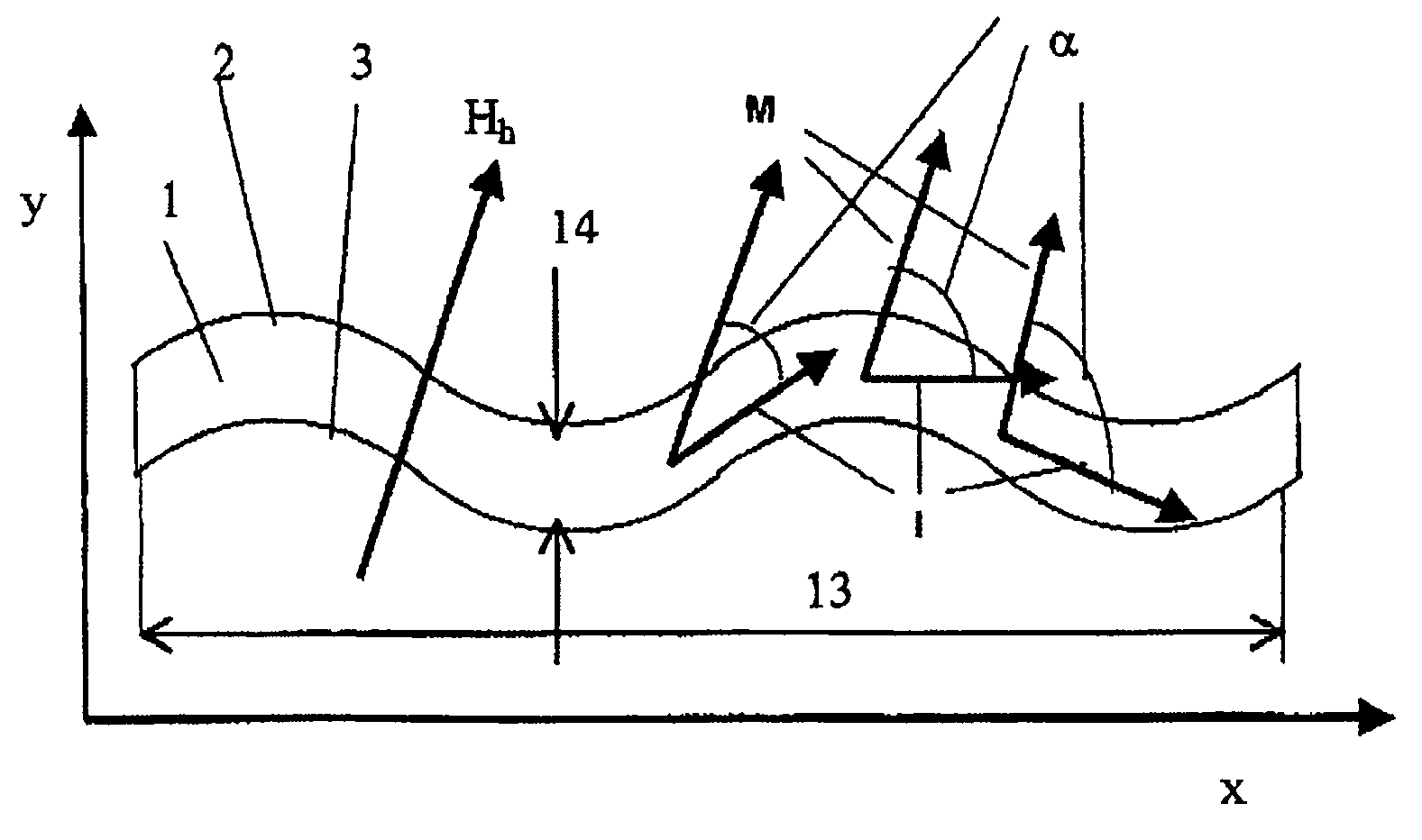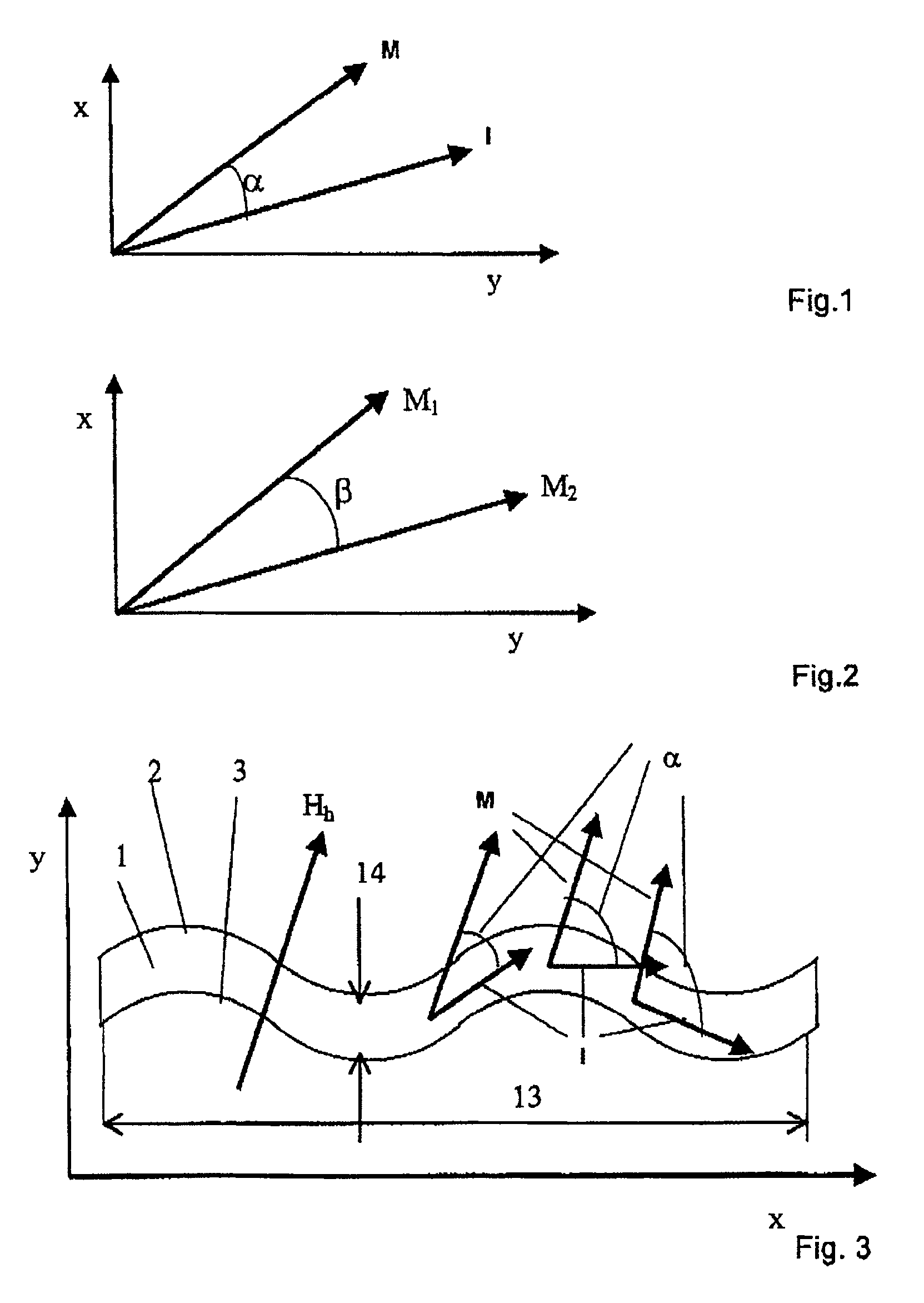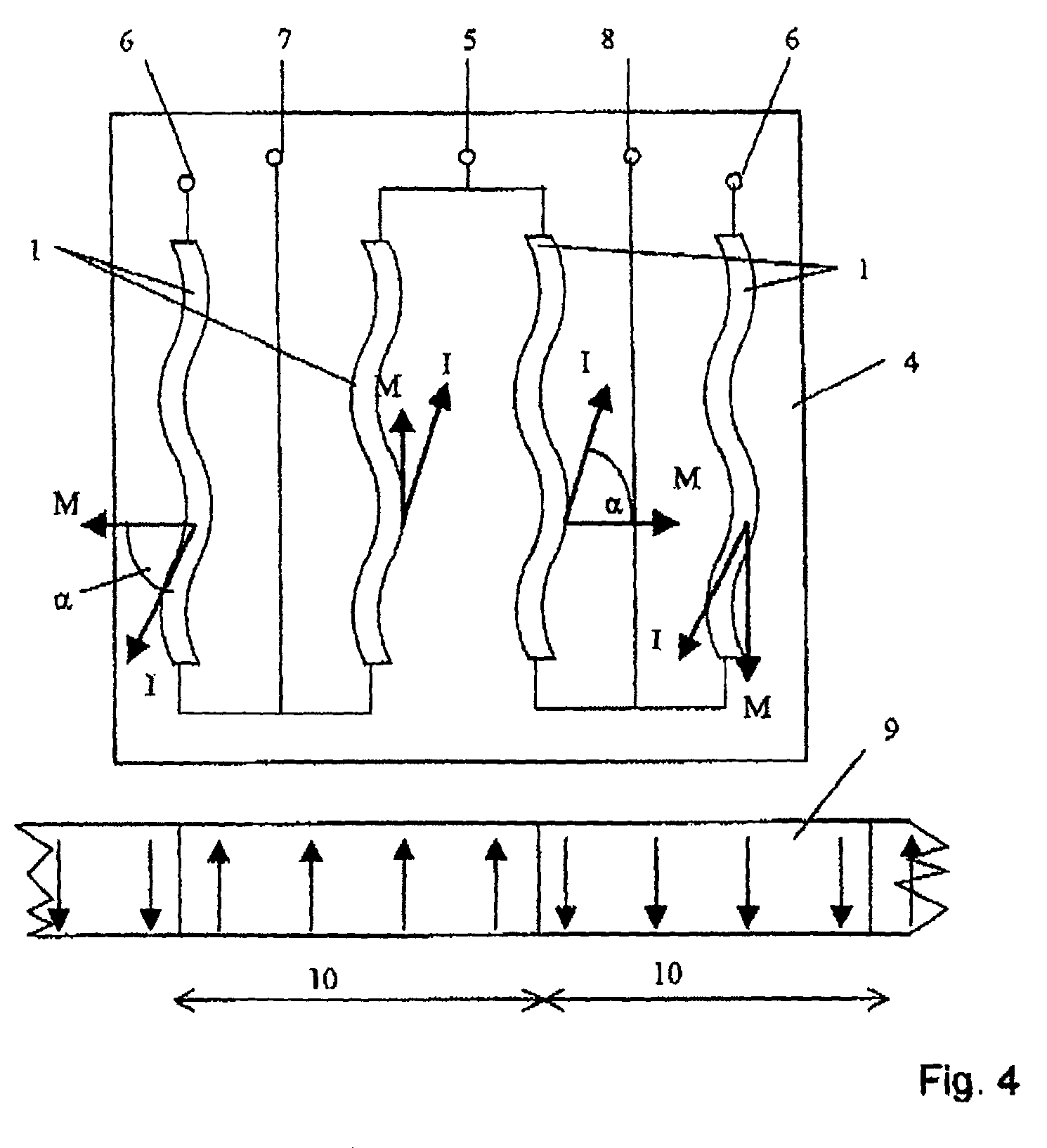Magnetoresistive sensor for determining an angle or a position
a magnetoresistive sensor and angle technology, applied in the field of magnetoresistive sensors, can solve problems such as increasing the occurrence of hysteresis areas
- Summary
- Abstract
- Description
- Claims
- Application Information
AI Technical Summary
Benefits of technology
Problems solved by technology
Method used
Image
Examples
Embodiment Construction
[0026]FIG. 1 illustrates the x-y layer plane of an AMR strip. The strip longitudinal direction is intended to coincide with the x axis in this case. The direction of the current I for a point on the strip is shown. In general, this direction does not match the strip longitudinal direction x. Under the influence of an external magnetic field, the magnetization M at the point under consideration points in the direction shown. The angle between the direction of the current I and the direction of the magnetization M is α. The resistivity ρa of the magnetoresistive layer is governed by this angle:
ρa(α)=ρa0+(Δρa / 2)(1−cos(2α))
[0027]where ρa0 is the non-field-dependent component and Δρa is the amplitude of the field-dependent change in the resistivity. The resistance-determining angle at any point on the strip is α. The resistivity is likewise a function of x when the direction of the current I and of the magnetization M varies in the strip longitudinal direction x.
[0028]FIG. 2 shows a GMR ...
PUM
 Login to View More
Login to View More Abstract
Description
Claims
Application Information
 Login to View More
Login to View More - R&D
- Intellectual Property
- Life Sciences
- Materials
- Tech Scout
- Unparalleled Data Quality
- Higher Quality Content
- 60% Fewer Hallucinations
Browse by: Latest US Patents, China's latest patents, Technical Efficacy Thesaurus, Application Domain, Technology Topic, Popular Technical Reports.
© 2025 PatSnap. All rights reserved.Legal|Privacy policy|Modern Slavery Act Transparency Statement|Sitemap|About US| Contact US: help@patsnap.com



